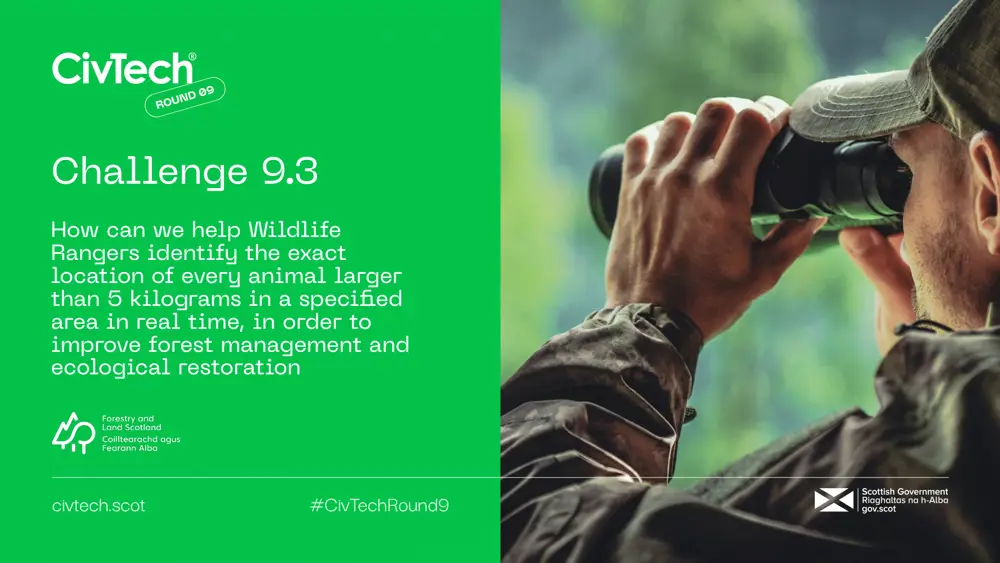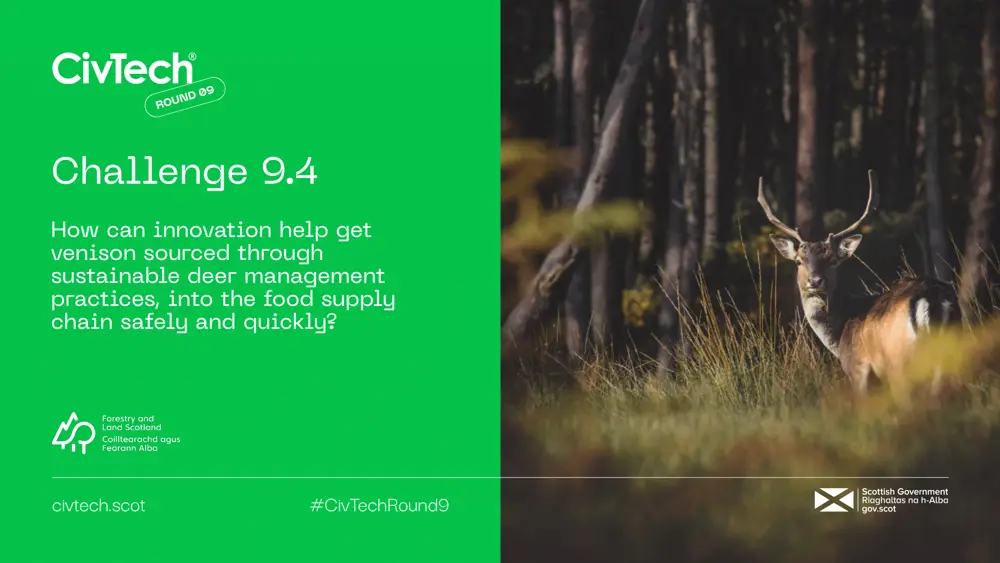New CivTech challenge has deer management in its sights
Deer management plays a large part in how we will achieve our ongoing climate and biodiversity goals. It is estimated that there are now over 1 million deer in Scotland, a number that has doubled in the past 30 years.
We are looking to the CivTech challenge for help to see if we can manage these numbers in a more efficient way and help us modernise how we transport venison from the forest to our deer larders in a more effective, fully food standards compliant way while improving the health and safety of our Wildlife Staff.
The fourth collaboration – part of the Civtech 9 programme – involves two projects, each worth up to £650,000, with a minimum 70% funding coming from the Civtech Innovate for Nature fund.
Deer impacts our forests and land in many ways; from eating the younger trees; stripping back the bark off older trees, over-grazing in highly valuable areas like ancient woodland sites and compacting soil. All these things impact our overall goals for both forestry and biodiversity.
Learn more about how we manage deer across Scotland

Challenge 9.3
How can we help Wildlife Rangers identify the exact location of every animal larger than 5 kilograms in a specified area in real time, to improve forest management and ecological restoration?
We are looking for innovative approaches to help us improve how we locate deer across our land. We manage around 9% of Scotland, so we are looking for landscape scale ideas that can give us real-time locations, accurate counts, and species identification.
Our Wildlife Mangers spend a lot of time tracking and identifying animals. This is done over rugged terrain and in all types of weather. weather. Which is why we are looking to develop a cost-effective way of identifying the exact location of animals over 5kg in a specified area.
“Wildlife Rangers are indispensable for managing deer to protect new woodland and to sustain habitats for a wide range of other species. However, a lot of their time is taken up trying to track and identify deer, or occasionally other animals such as wild pigs, through rugged and variable terrain.’ Says Project Manager for FLS, Veronica Lyne-Pirkis
A working system would ideally be able to give a ranger an idea of the location of the deer and other mammal population in the immediate area while they are on site. However, a representation of deer and other mammal numbers on the site within the previous 24 hours would still be useful.
Full details of the challenge can be found on the CivTech Scotland website.

Challenge 9.4
How can innovation help get venison sourced through sustainable deer management practices, into the food supply chain safely and quickly?
The other issue we face is transporting deer carcasses in a safe, hygienic and efficient way while fully complying with food standards legislation and best practise. We manage large and remote areas of land across Scotland and in some locations this distance is too great and the terrain too difficult to do this safely. A ranger could be faced with dragging a deer, which might weigh up to 120kg, off the side of a mountain through standing and felled forests, ditches, watercourses, peat bogs and rocky slopes.
“Taking a shot might mean committing that ranger to five or more hours of hard physical labour, time that they could instead be committing their considerable skills to other wildlife priorities in an area.’ Added Veronica.
Our second challenge is therefore looking at developing a more efficient way of transporting carcasses safely, quickly, and easily from landscape to larder, while maintaining the carcass in good condition.
Full details of the challenge can be found on the CivTech Scotland website.
- Deer management strategy
- Deer numbers placing unprecedented pressure on environment
- Out of season deer control on Scotland’s national forests and land